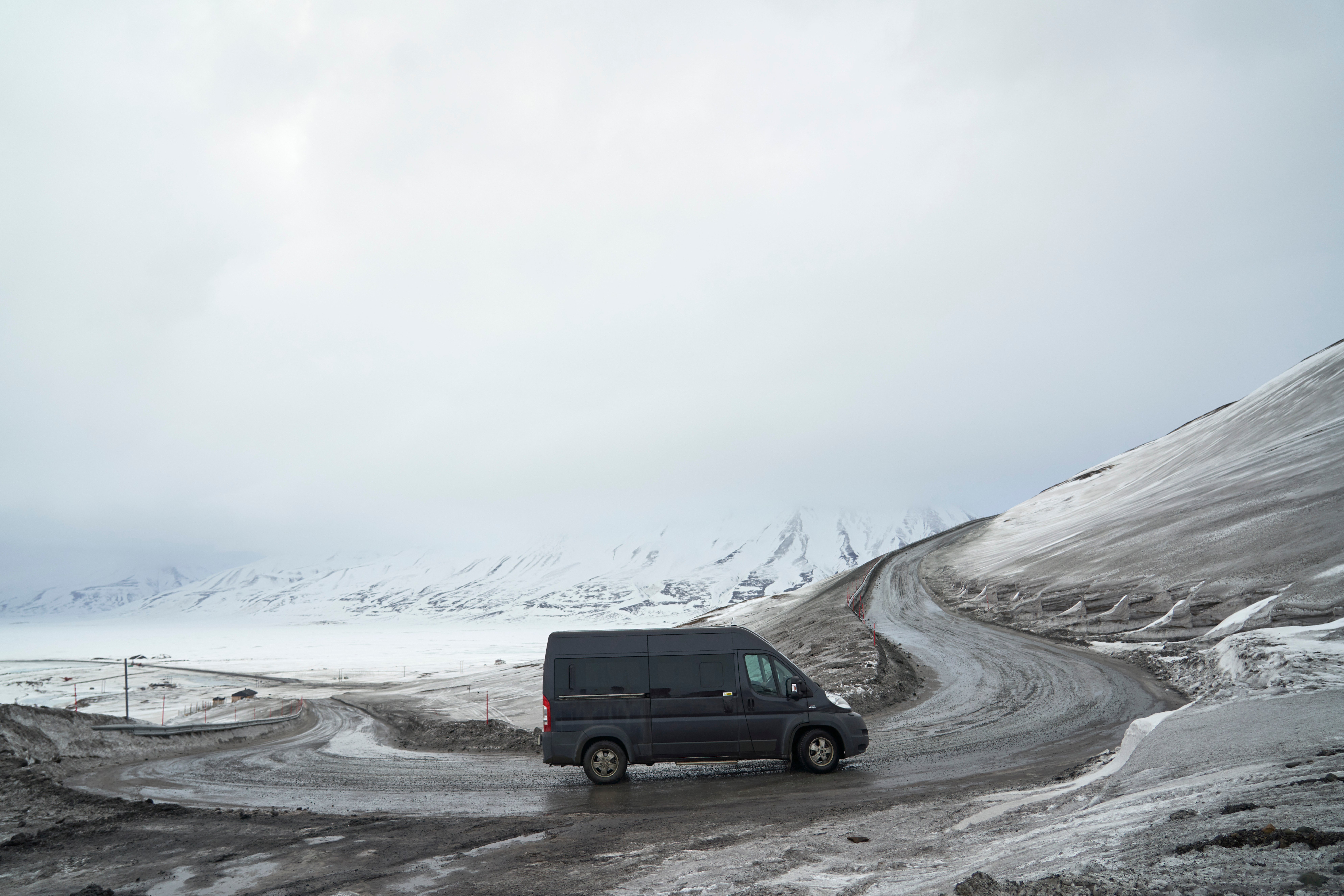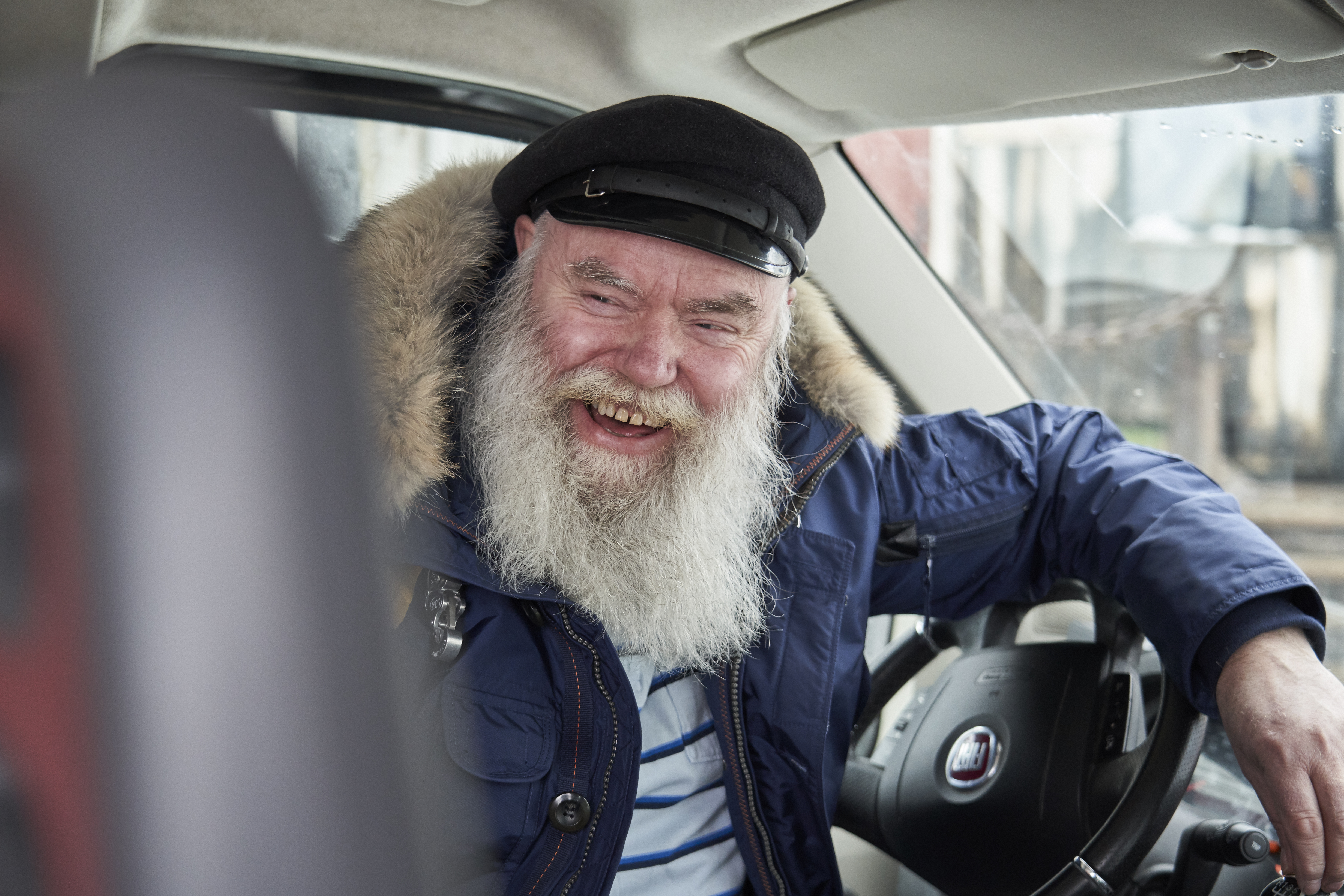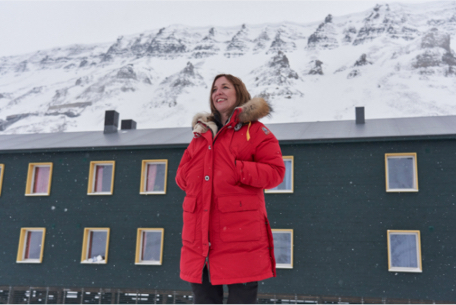

WIGGO ANTONSEN
Longyearbyen is the largest settlement and administrative centre of Svalbard. Once an active coal-mining town, it is now better known for its university, the Svalbard Global Seed Vault, as a base to see breathtaking glaciers and the Northern lights, and for scientific research.


We are taken on a tour by Wiggo Antonsen, a local taxi driver and sightseeing tour operator, who explains that the best part of Longyearbyen are the people and the sense of community.
“IN THIS TOWN, WE ARE 2,304 CITIZENS, BUT WE COME FROM 51DIFFERENT COUNTRIES” HE SAYS. “WHAT I LIKE BEST ABOUT THIS PLACE IS THE COMBINATION OF PEACE, NO STRESS AND NO CRIME”.
In Svalbard there is virtually no such thing as a “local” inhabitant. Like Wiggo, who came from mainland Norway over a decade earlier, many have left behind more hectic lives for a chance to live in the icy north. It is an enticing mix of cultures, religions and beliefs that makes it uniquely colourful and inclusive.


And Wiggo clearly has no intention to leave anytime soon. “I came up here and I found out this was laid back and it’s a simple life. I’m going to stay here till I retire completely that’s for sure”.
DISCOVER OUR SPECIAL PROJECTS
-
 VOICES FROM AN ICY COASTThe Parajumpers Stories speak of lives outside the ordinary, lived in the remotest corners of earth where powerful forces of nature make everyday survival a challenge.Discover more
VOICES FROM AN ICY COASTThe Parajumpers Stories speak of lives outside the ordinary, lived in the remotest corners of earth where powerful forces of nature make everyday survival a challenge.Discover more -
 WIGGO ANTONSENLongyearbyen is the largest settlement and administrative centre of Svalbard.Discover more
WIGGO ANTONSENLongyearbyen is the largest settlement and administrative centre of Svalbard.Discover more -
 HEIDI SEVESTRESvalbard in Norwegian means “Icy Coast”. Yet Heidi Sevestre, a resident ‘ice doctor’, has seen the troubling signs that this frozen landscape has changed in recent decades.Discover more
HEIDI SEVESTRESvalbard in Norwegian means “Icy Coast”. Yet Heidi Sevestre, a resident ‘ice doctor’, has seen the troubling signs that this frozen landscape has changed in recent decades.Discover more -
 JASON ROBERTSThe rugged beauty of Svalbard can make it difficult to leave. Just ask Jason Roberts, originally from Australia and one of the long- time residents of the Norwegian Archipelago.Discover more
JASON ROBERTSThe rugged beauty of Svalbard can make it difficult to leave. Just ask Jason Roberts, originally from Australia and one of the long- time residents of the Norwegian Archipelago.Discover more -
 KRISTIN ERIKSSON“Guiding guests through the wilderness of Svalbard is “the best job you can have”, says Kristin Eriksson. At just 23, Kristin has already been a nature guide on 3 different Continents.Discover more
KRISTIN ERIKSSON“Guiding guests through the wilderness of Svalbard is “the best job you can have”, says Kristin Eriksson. At just 23, Kristin has already been a nature guide on 3 different Continents.Discover more -
 HEGE GISKEIn the last decade, more and more people have come to Svalbard motivated by the beauty of the place but also by the challenge of what it means to survive both as a community as well as an individual in such a unique location.Discover more
HEGE GISKEIn the last decade, more and more people have come to Svalbard motivated by the beauty of the place but also by the challenge of what it means to survive both as a community as well as an individual in such a unique location.Discover more